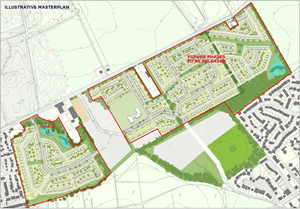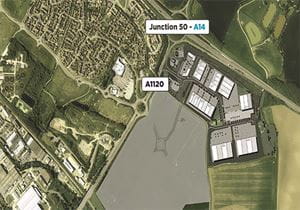 The planning system has the ability to tackle social ills but all too often the system‘s inflexibility and lack of clarity results in a failure to deliver the ‘bigger picture’.
The planning system has the ability to tackle social ills but all too often the system‘s inflexibility and lack of clarity results in a failure to deliver the ‘bigger picture’.
Take housing for older people: we have an increasing ageing population which requires appropriate accommodation and care. Planning has the power to reduce the financial cost of caring for the elderly in hospitals and other institutions, by enabling developments which provide older people with many social and economic benefits tailored to meet their changing needs. Yet a lack of consensus on Use Class definitions for such developments is potentially stifling the number of schemes coming forward.
DEFINITIONS
Class C2 – according to the Use Classes Order 1987 (as amended):
‘Use for the provision of residential accommodation and care to people in need of care other than a use within a class C3 (dwelling house). Use as a hospital or nursing home …’
Class C3 – following Circular 8/2010:
‘C3 (a) those living together as a single household – a family; C3(b) those living together as a single household and receiving care;…’
Care – according to the Use Classes Order 1987 (as amended):
‘Personal care for people in need of such care by reason of old age, disablement, past or present on alcohol or past or present mental disorder.’
There is a general acceptance that a residential care home, which usually consists of bedrooms with either en-suite or shared bathrooms, communal dining rooms and other facilities with on-site care, falls within Class C2. By contrast, sheltered housing, comprising self-contained accommodation with a warden but no direct provision of care is seen simply as ‘housing’, and thus Class C3 development. So where should a retirement community properly sit, why does it matter and is a wholesale review of the Use Classes Order required?
Changing needs
There is little dispute that if we are to encourage people to move out of the family home when they become an ‘empty-nester’, divorce or lose a partner, suitable alternative housing needs to be provided; which in turn makes their home available to the next generation.
However, decisions to move out of choice are often deferred because as we grow old we think we need to retain our comfortable bricks and mortar investment to pay for care in our old age. As a result we stay put until we are forced into a ‘crisis move’ which is unplanned, with the decision made by others and invariably requiring the sale of the family’s future inheritance to pay for care in and ‘end of life’ institution. Such decisions need to be made easier and whilst the housing market is dynamic and has developed models that that take advantage of social and technological changes to provide suitable homes, the planning system is less flexible and as a result the delivery of specialist housing is frustrated.
One particular model that seeks to encourage moves as a lifestyle choice is ‘community based retirement living’ which seeks to provide accommodation for people over a specified age (usually over 60 but sometimes over 55). Such developments are non-institutional in character, provide homes with their own front door and are designed to allow residents to live independently within their own home whilst paying for care on an ‘as and when needed’ basis, usually provided by a domiciliary provider with additional personal support from the on-site operator.
The advantage of such proposals is that they cater for a specific demographic and provide a range of shared facilities that are aimed at encouraging social interaction and avoiding isolation. In addition the homes are specially designed so that they can be adapted to respond to the occupiers’ changing needs as they grow old. Most retirement community schemes include a clubhouse which comprises social, leisure and welfare facilities, specialist health and fitness areas and administrative accommodation, with the buildings set in high quality landscaped communal grounds. All of which fosters a ‘look out for others’ environment.
While clearly popular, such models do not fit comfortably into a particular Use Class as they are perceived to fall somewhere between Class C2 and C3. The confusion usually surrounds the level of care provided, the fact that the style of accommodation is not institutional enough or the entry age has been set too low!
The reason we need clarity in this regard is because the lack of it often undermines the viability of such schemes and consequently sites snapped up by conventional housebuilders. In short, retirement communities which provide extensive communal facilities that target a restricted occupier market (the over 55s and those in need of care) are often more difficult to fund, and the additional burden of the Community Infrastructure Levy and obligations towards affordable housing can further undermine the viability of such schemes.
This is where a C2 Use Class categorisation comes into its own. Such a classification often means retirement schemes are exempt from affordable housing obligations and in some areas even exempt from making CIL payments. In one fell swoop operators are more able to compete with traditional housebuilders when seeking to acquire sites and once over this hurdle, deliver a much needed housing product.
Emerging consensus
To understand more about how the planning system is responding to these specialist housing developments, Carter Jonas has analysed a number of recent decisions where retirement communities and have granted permissions on a Class C2 basis. This seems to suggest that there is a growing number of councils prepared to accept that developments which can satisfy the following criteria do not fall within Class C3 and can be legitimately classed as C2 developments:
• Where there is an age-related entry requirement which requires that at least one of the occupiers of a unit is over a specified age;
• Where the occupier is clearly in need of care at the outset (irrespective of age);
• Where the operator of the development either provides care on site or has an arrangement with a domiciliary provider;
• Where the scheme includes a range of communal facilities targeted at well-being and community living;
• Where all residents are required to pay for a care package as part of a wider estate service charge, whether they are in need of care at the time of entry or not.
It seems to be accepted also that if individual homes are specifically designed to accommodate elderly persons or are capable of easy adaptation to meet the occupiers’ changing needs over time (i.e. designed to LifetimeHomes / wheelchair accessibility standards, with provision for alarms and hoists etc.), they more easily fall within the spectrum of Class C2.
Based on this knowledge, Carter Jonas has sought to differentiate between Class C2 and C3 living by identifying those facilities and services provided within a Class C2 retirement scheme and those provided by a traditional housebuilder in, say, a gated community where some communal facilities are more commonplace. Whilst there are inevitably some overlaps there appears to us to be a very clear distinction between those development that provide care and support for the elderly and those that do not.
On this basis it is our opinion that there should be no confusion as to how retirement communities should be classified.
Firstly, they cannot be classed as sui-generis (a use with no specific use class) as such developments are not technically ‘mixed use’ schemes because they have a single primary use: that of providing specialist age-related accommodation which responds to the care needs of the occupiers. The fact that they provide a range of other ancillary functions (fitness facilities, restaurants, surgeries and even shops) supports the primary purpose and does not make the development a mixed use.
Equally they should not be seen as delivering traditional Class C3 housing as they offer a range of facilities and services targeted specifically at a special audience and are only accessible to those who qualify; i.e. they do not provide open market housing.
On the above basis, we conclude that such specialist residential uses fall clearly within the Class C2 end of the Use Class spectrum and planning applications should be approved on this basis.
At Carter Jonas we are looking for a consistency of approach if we are to deliver more retirement communities and would advocate a very minor change to the Use Classes Order which makes specific reference to retirement communities within definition of Class C2 and a broadens of the definition of care to include reference to both domiciliary provision and the provision of personal care/ support.
With such small changes the housing sector can continue to evolve and bring forward specialist housing that is tailored to meet the needs of our aging population.
Peter Edwards
Partner, Planning & Development
020 7529 1501
Peter.Edwards@carterjonas.co.uk



 On the 11th January, Prime Minister Theresa May launched ‘A Green Future: Our 25 Year Plan to Improve the Environment’ which looks to “strengthen the relevant protections” in the National Planning Policy Framework (NPPF) and pledges to improve air and water quality in the UK and “protect our many threatened plants, trees and wildlife species.”
On the 11th January, Prime Minister Theresa May launched ‘A Green Future: Our 25 Year Plan to Improve the Environment’ which looks to “strengthen the relevant protections” in the National Planning Policy Framework (NPPF) and pledges to improve air and water quality in the UK and “protect our many threatened plants, trees and wildlife species.”  The planning system has the ability to tackle social ills but all too often the system‘s inflexibility and lack of clarity results in a failure to deliver the ‘bigger picture’.
The planning system has the ability to tackle social ills but all too often the system‘s inflexibility and lack of clarity results in a failure to deliver the ‘bigger picture’.  The London Planning Team has secured planning permission on behalf of our clients, Woodcote Estates Ltd, for six new flats on a redundant car park site in Leatherhead, Surrey. The flats will be located in a new four storey building comprising of three residential storeys above a basement car park as well as providing secure cycle and refuse storage. This redevelopment will make better use of a brownfield site that benefits from a sustainable location in central Leatherhead close to existing shops, services, amenities and public transport and help ensure the centre’s ongoing vitality.
The London Planning Team has secured planning permission on behalf of our clients, Woodcote Estates Ltd, for six new flats on a redundant car park site in Leatherhead, Surrey. The flats will be located in a new four storey building comprising of three residential storeys above a basement car park as well as providing secure cycle and refuse storage. This redevelopment will make better use of a brownfield site that benefits from a sustainable location in central Leatherhead close to existing shops, services, amenities and public transport and help ensure the centre’s ongoing vitality. Following 18 months of hard work Carter Jonas’ London Planning Team has successfully delivered the approval of reserved matters for our client, L&Q, as part of the first phase regeneration of the former Kodak factory in Wealdstone, north-west London. The phase, called ‘Aperture Works’ to draw upon the site’s legacy as a manufacturing centre of cameras and film, will provide 650 new homes as well as a food store, flexible commercial spaces and a health centre.
Following 18 months of hard work Carter Jonas’ London Planning Team has successfully delivered the approval of reserved matters for our client, L&Q, as part of the first phase regeneration of the former Kodak factory in Wealdstone, north-west London. The phase, called ‘Aperture Works’ to draw upon the site’s legacy as a manufacturing centre of cameras and film, will provide 650 new homes as well as a food store, flexible commercial spaces and a health centre.  Carter Jonas have recently launched the first phase of an 800 dwelling development site to the market in the popular suburb of Sprowston, Norwich.
Carter Jonas have recently launched the first phase of an 800 dwelling development site to the market in the popular suburb of Sprowston, Norwich.  Carter Jonas have recently secured resolution to grant planning permission for Stowmarket East, a 54 acre employment site in Mid Suffolk, on behalf of Building Partnerships Ltd.
Carter Jonas have recently secured resolution to grant planning permission for Stowmarket East, a 54 acre employment site in Mid Suffolk, on behalf of Building Partnerships Ltd. Working alongside their colleagues in rural management, our Planning North have been appointed to advise Noble Foods Ltd, who are the largest leading supplier of fresh eggs to the market. Each week the company individually grade, pack and deliver over 60 million eggs to its customers. Brands owned by the company include the Happy Egg, Big & Fresh, Eggs for Soldiers and Gü puddings.
Working alongside their colleagues in rural management, our Planning North have been appointed to advise Noble Foods Ltd, who are the largest leading supplier of fresh eggs to the market. Each week the company individually grade, pack and deliver over 60 million eggs to its customers. Brands owned by the company include the Happy Egg, Big & Fresh, Eggs for Soldiers and Gü puddings. Carter Jonas’ Planning North Team have secured planning permission for the retention of an inert material recycling business in Leeds. JM Haulage have major contracts with Tarmac and the Department for Transport covering road improvements across the north, including the M62, M1 and A1. In effect, the business takes arising’s from engineering and building operations and reprocesses the material for reuse as secondary aggregates and topsoil and for road surfacing.
Carter Jonas’ Planning North Team have secured planning permission for the retention of an inert material recycling business in Leeds. JM Haulage have major contracts with Tarmac and the Department for Transport covering road improvements across the north, including the M62, M1 and A1. In effect, the business takes arising’s from engineering and building operations and reprocesses the material for reuse as secondary aggregates and topsoil and for road surfacing. 





